EIA’s International Energy Outlook 2017 projects that world energy consumption will increase by 28% from 2015 through 2040. The report provides energy consumption projections for 16 world regions, divided according to Organization for Economic Cooperation and Development (“OECD”) members and nonmembers (“non-OECD”).
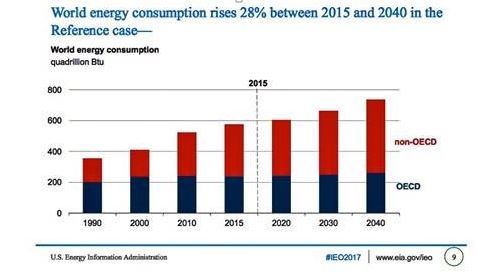
Non-OECD countries (developing nations like India and China) account for about 84% of this projected increased energy use, with Asia accounting for most of the increase in energy use growth in non-OECD regions.
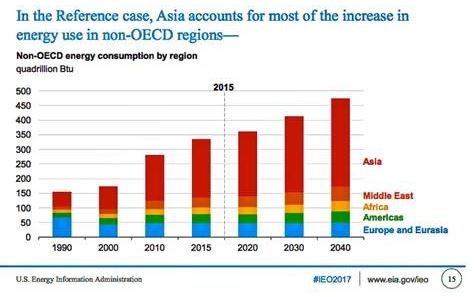
The report projects significant growth (43%) in natural gas use through 2040.

Growth in petroleum and other liquid fuels use (18%) also continues but at a slower pace than natural gas.

Coal energy use is projected to remain near the current level during this period with declines in China offset by increased use in India.
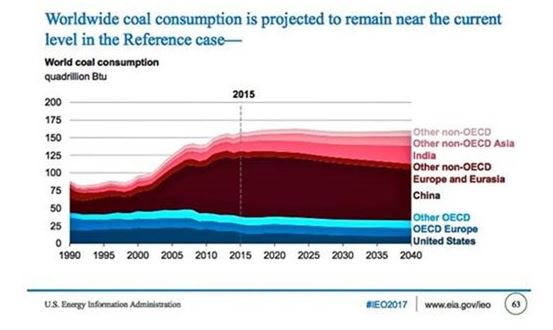
Renewables (hydropower, wind, solar, geothermal, etc.) is the fastest growing energy source. Wind, solar, and natural gas supplying the majority share of net electricity generation.
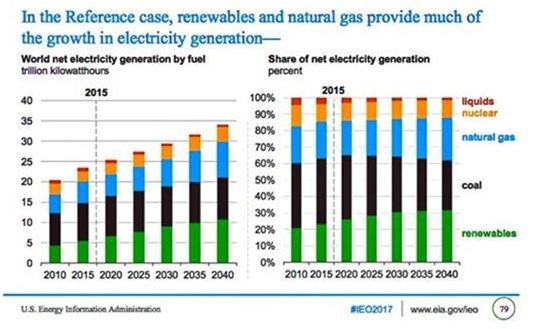
Renewables are projected to supply 31% of world electricity generation in 2040, the same percentage as coal, while hydropower represents 53% of the electricity renewable energy total.
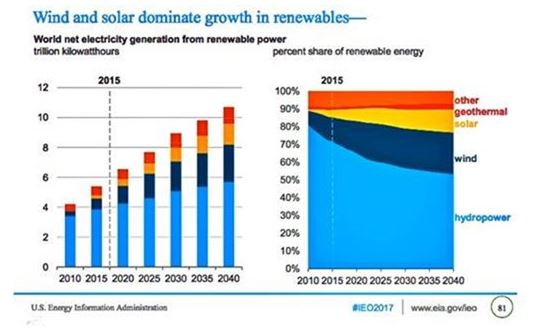
In 2040 fossil fuels (petroleum and other liquids, natural gas, and coal) and nuclear are projected to supply about 83% of net global energy consumption with 9% from renewables (wind, solar, geothermal, etc.) and 8% from hydropower.

OECD countries (developed countries like the U.S., Canada, Australia, and OECD-European nations) are projected to reduce CO2 emissions between 2015 and 2040, while the non OECD countries are projected to increase CO2 emissions by about 5.5 billion metric tons.
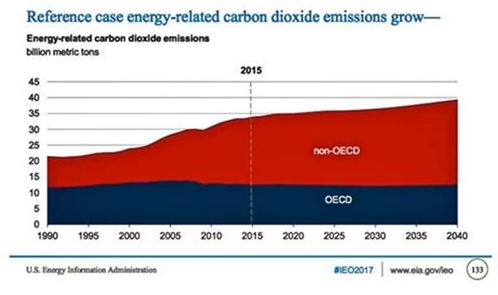
U.S. CO2 emissions in 20140 are projected fall from 2015 levels and about 19% below the peak year 2005, when the U.S. emitted 6 billion metric tons of CO2.
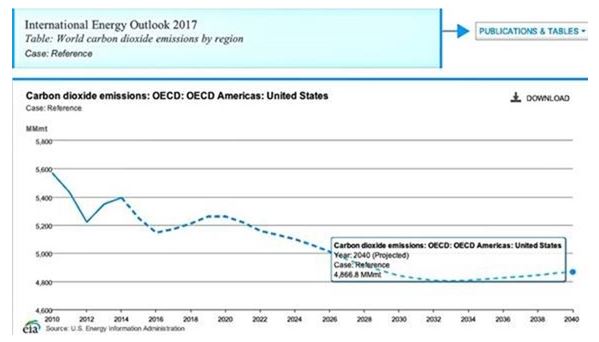
Increased use of natural gas derived from fracking technology is replacing costlier coal sources and is driving reductions in CO2 emissions from OECD and non-OECD countries alike.
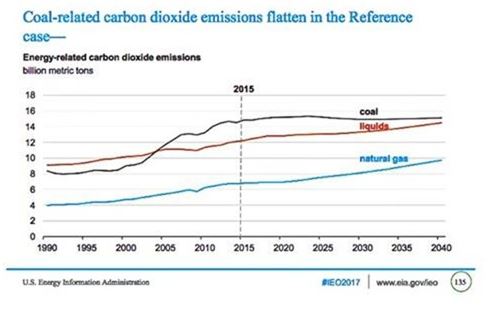
Even so, coal energy use continues to comprise the majority of global CO2 emissions and China is projected to remain the world’s largest coal user by a wide margin.
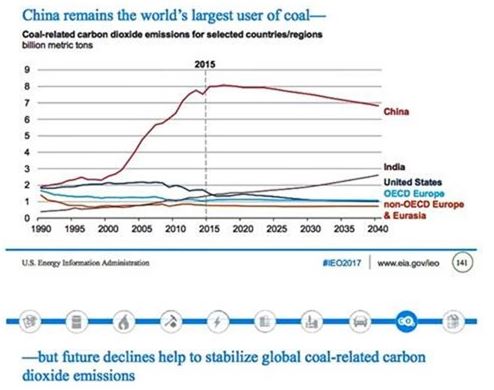
The EIA 2017 IEO report thus shows the continued dominance of fossil fuels in providing the huge majority of global energy consumption for decades to come. It also shows the huge role that the increased use of natural gas is playing in reducing OECD nation CO2 emissions and in lowering the rate of growth of CO2 emissions in non-OECD nations after 2015. These results thus call into question the wisdom of mandated global CO2 emissions programs and increased renewable energy use when fracking technology has produced dramatic benefits by lowering market price-based energy costs while increase more economic use of lower emissions fuels.
[View source.]